Advertisements
Advertisements
प्रश्न
In below fig, ray OS stand on a line POQ. Ray OR and ray OT are angle bisectors of ∠POS
and ∠SOQ respectively. If ∠POS = x, find ∠ROT.
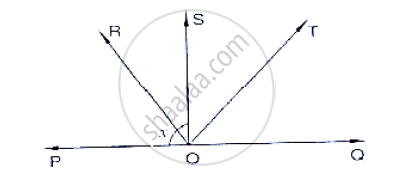
उत्तर
Given,
Ray OS stand on a line POQ
Ray OR and Ray OT are angle bisectors of ÐPOS and ÐSOQ respectively
`∠`POS = x
`∠`POS and `∠`QOS is linear pair
ÐPOS + ÐQOS = 180°
x + ÐQOS = 180°
`∠`QOS = 180 - x
Now, ray or bisector `∠`POS
∴ `∠`ROS = `1/2` `∠`POS
= `1/2`× x [ ∵ `∠`POS = x]
`∠`ROS = x
Similarly ray OT bisector `∠`QOS
∵`∠`TOS = `1/2` `∠`QOS
= `180/2` - x [∵ `∠`QOS = 180 - x]
=` 90/2` - x
∴ `∠`ROT = `∠`ROS + `∠`ROT
= `x/2`+ 90 -`x/2`
= 90°
∴`∠`ROT = 90°
APPEARS IN
संबंधित प्रश्न
Write the supplement of the following angles .
138°
An angle is 14° more than its complementary angle. What is its measure?
In the below Fig, ∠AOC and ∠BOC form a linear pair. if a − 2b = 30°, find a and b.
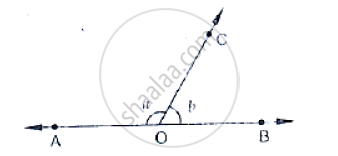
How many pairs of adjacent angles, in all, can you name in below fig.?
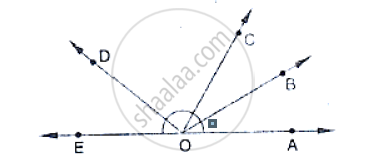
Given ∠POR = 3x and ∠QOR = 2x + 10, find the value of x for which POQ will be a line.
(Below fig).
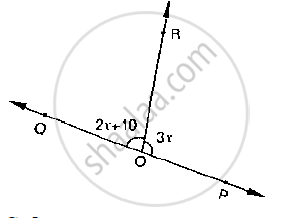
What value of y would make AOB a line in below fig, if ∠AOC = 4y and ∠BOC = (6y +
30)
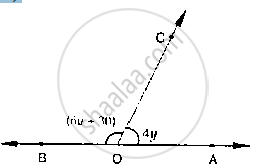
If below fig, ∠AOF and ∠FOG form a linear pair.
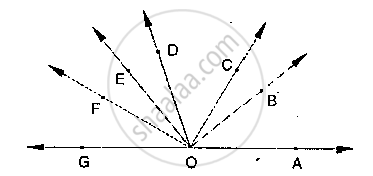
∠EOB = ∠FOC = 90° and ∠DOC = ∠FOG = ∠AOB = 30°
(i) Find the measures of ∠FOE, ∠COB and ∠DOE.
(ii) Name all the right angles.
(iii) Name three pairs of adjacent complementary angles.
(iv) Name three pairs of adjacent supplementary angles.
(v) Name three pairs of adjacent angles.
statement are true and false
Angles forming a linear pair can both the acute angles.
Fill in the blank in the following to make the statement true:
If two parallel lines are intersected by a transversal, then each pair of corresponding
angles are _______
In the given figure, if l1 || l2, what is the value of x?

